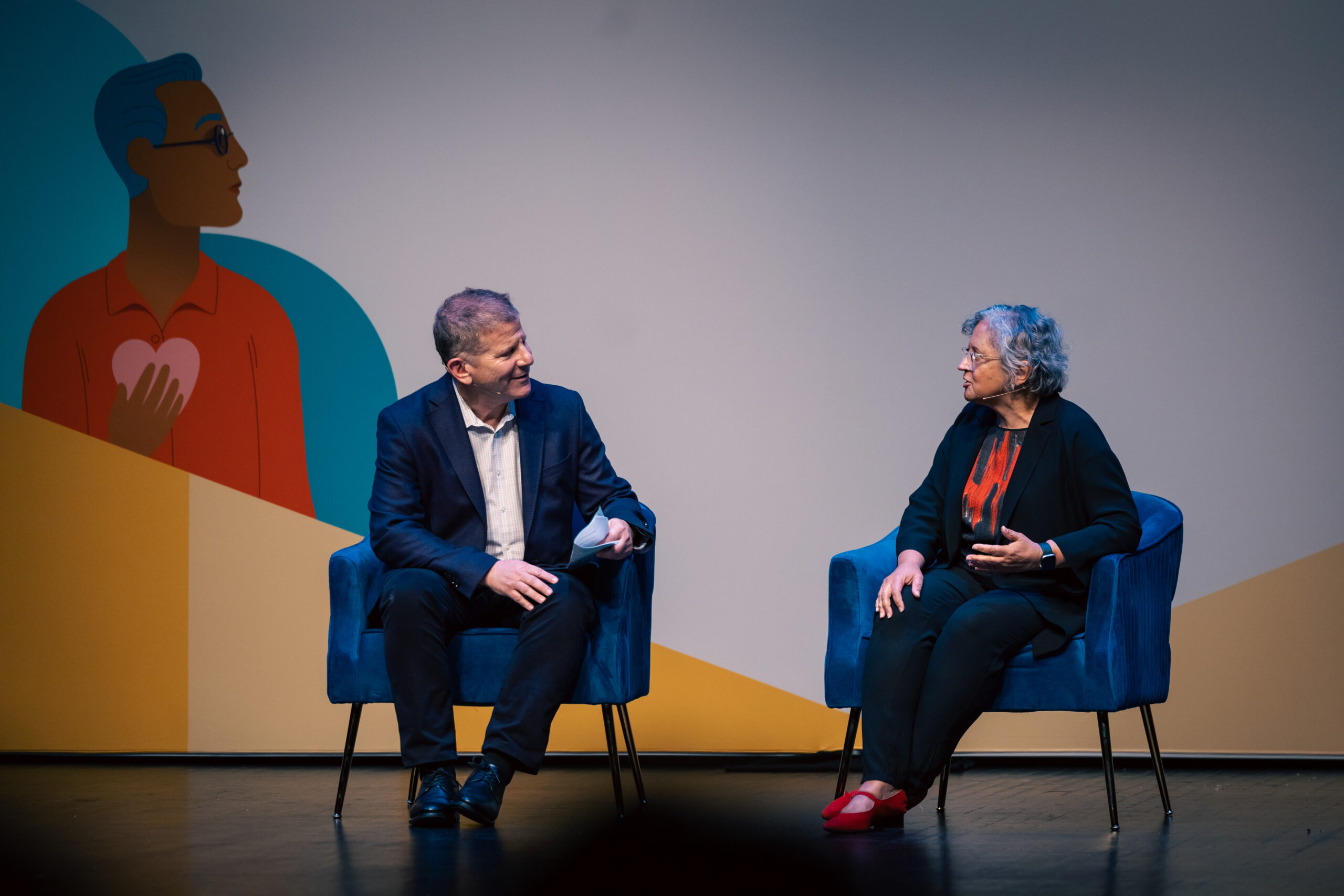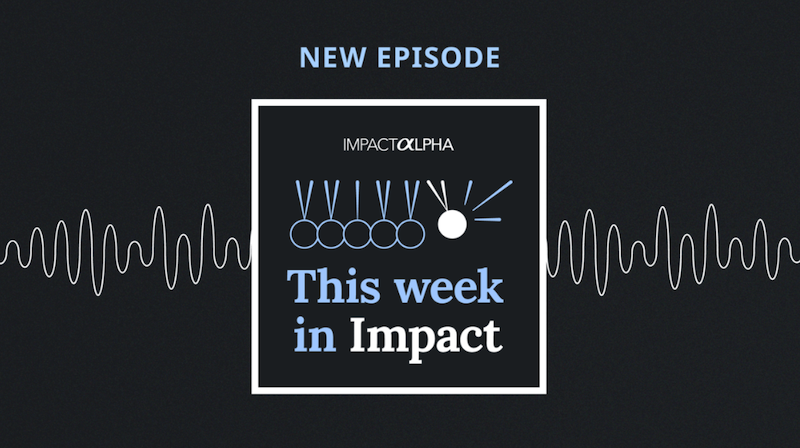I had a conversation with a leader in impact investing this week about Charlottesville (UVA is my alma mater). The investor asked me, “In the wake of everything that’s happening, does impact investing even matter?”
The investor’s question got me thinking. I re-read Antony Bugg-Levine’s ImpactAlpha post from February: Does impact investing matter in the age of Trump and Brexit? When we take a step back from our work and reflect on its larger meaning, what do we see?
The right response to Charlottesville is to do what you can, with what you have, from where you are. If you’re in impact investing, it means you likely have education, influence over where capital goes, and a certain level of privilege — which gives you the privilege to do something about systemic biases in our economy and our country.
Why impact investing matters
Our current economic model has created a highly unequal society that exacerbates racism and inequality. Torches and hate speech are explicit racism, but the way we pick new ideas can contribute to — or reduce — implicit and systemic racism.
As impact investors, we are a self-selected group that has chosen to be concerned with the greater good. But we still have so much room to improve. Like any burgeoning movement, impact investors have borrowed best practices from the industry we are working to improve. In the process, we’ve accidentally borrowed a lot of shortcuts and biases from mainstream, Silicon Valley-style investing.
Tracking social impact metrics is important; but if we want to take the most expansive definition of “impact”, we need to improve on HOW we invest as well as WHAT we invest in. The changes involve both people and process.
People
Impact investing funds often borrow their due diligence processes from Wall Street and Silicon Valley, the models that gave us the most out-of-balance economy in the history of the modern world. Overall, less than 5% of venture capital goes to women, and less than 1% goes to people of color.
What can you do about it?
Look beyond the “warm introduction”. Most investors look for a “warm introduction” — a referral from a trusted source — to manage the top of the funnel. The average investor tells entrepreneurs to raise money from “friends and family.” But what if your friends and family don’t have money? The average Black and Latino family have a net worth under $10,000, compared with $100,000 for the average white family. For inspiration, Arlan Hamilton, Christie Pitts, and Backstage Capital source, review, and invest in ideas far more inclusively than funds by using specific techniques — for example, actively encouraging cold-calls and cold emails.
Experiment with new models for sourcing. Pitchfests, resumes and interviews are packed with implicit bias that cut most people out. Laura Huang at Wharton, for example, found that men were fifty per cent more likely to raise money pitching the same business as women, and all sorts of data shows that even well-meaning people have unconscious bias toward people of other races. Freada Kapor Klein, Ellen Pao, and Project Include have done incredible work looking at strategies and technology that mitigate bias in all sorts of selection.
Hire diverse teams. People invest in people they know, understand, and identify with. Fewer than five percent of VC investing partners are women, and fewer than one percent are people of color; it’s not a coincidence that this matches the percentages on who gets investment. Silicon Valley’s sexism scandals, in my opinion, come from a concentration of power. When a few gatekeepers control the very rare cash that a founder needs to grow, it opens the door for abuse of power. Impact investing has the chance to show what a diverse group of decision-makers over capital looks like — and to show that diverse perspectives produce more interesting results.
Support bottom-up, local innovation. More than of venture capital in the world goes to just three US metro areas. Capria is an impact investing initiative that backs and supports emerging fund managers from under-represented backgrounds in emerging markets; I see a market gap for a Capria-like solution that backs new investors and investment funds in the US, particularly from overlooked backgrounds. A few large angels do this very quietly, but I see a big opportunity for some institutional structure to dramatically expand the decision-makers over capital.
Process
Silicon Valley-style venture capital has a funny way of thinking about risk and return. The average VC thinks “I’ll invest in 100 companies, 95 will fail, and 5 will exit (which usually means get acquired by a larger company). Followed to its logical conclusion, this makes a few people very wealthy but doesn’t necessarily create jobs for most people in the middle class, or in many parts of the country.
What can you do about it?
Look into alternative investment structures. Revenue-share and dividend and employee stock ownership programs are two ideas I’ve seen piloted with strong evidence of promise. More on that here.
Learn about zebras. Astrid Scholz, Mara Zepada, Jennifer Brandel, and Aniyia Williams wrote a popular post this spring — Zebras Fix what Unicorns Break — about how to invest in companies that are more reflective of reality. If you’re interested, they have “Dazzlecon” (a dazzle is a gathering of zebras!) in Portland this November.
Don’t assume that bigger is better. Billion-dollar funds and billion-dollar acquisitions are the goal for many investments. But as I’ve written in this space, consolidation of our economy is killing middle class jobs. This hurts under-represented businesses more. As Brian Feldman outlines, merger and acquisition activity in banking has led to a 67% decline in black-owned banks since 1985. Find ways to back entrepreneurs that don’t force them to consolidate/get acquired by larger companies.
In addition to folks I’ve already mentioned, I see leaders like Jessica Norwood in New York, Derrick Braziel in Cincinnati, Rodney Foxworth in Baltimore, Melissa Bradley and Erin Horne McKinney in DC, and many others (who I apologize for leaving out!) addressing the “friends and family” problem, backing founders who don’t have access to capital. Make sure to pay attention to and resource the intermediaries that can create the pipeline you want to see.
Neighborhood Economics: Local funding for entrepreneurs without a rich uncle
Ross Baird is President of Village Capital and author of the upcoming book The Innovation Blind Spot, in bookstores September 12. Thanks to Ebony Pope for the help with this article.












